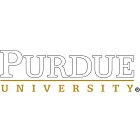This area focuses on electrical power engineering and the electrical to non-electrical energy conversion process. Topics of interest include electromechanical component design, power electronics design, passive component design, power magnetics, electric drives, electric propulsion systems, vehicle (ship, spacecraft, automotive) electric systems, and power system control and stability.
In the push for sustainability and reduced carbon emissions, energy conversion technologies are critical. Energy sources and systems faculty are at the forefront of modern electromechanical component and system design, analysis, and control. They also have significant efforts in power electronics particularly in the areas of control and passive component design.
As the demand for higher reliability and efficiency on aircraft and marine platforms increases, hydraulic control systems are being replaced by electric drive systems. Research is underway to accurately model the performance of alternative power-by-wire electric drive systems. Computer simulation packages are being designed that accurately evaluate complete power-by-wire systems, including actuators, converters, electric drives, and electrical distribution systems. Evaluation and design of electric propulsion systems is also in progress. The deregulation of the electric utilities coupled with the integration of alternative energy sources provides new challenges in power distribution and control. Current research includes evaluating the impact of deregulation on power quality, optimal control of the distribution system, and instability detection.
The Schweitzer Power and Energy Area has several research and undergraduate laboratories including the Grainger Energy Conversion and Microgrid Laboratory, the Grainger Power Magnetics Fabrication Laboratory, the Energy Storage and Material Characterization Laboratory, the Electric Vehicle Systems Laboratory, the Energy Systems Simulation Laboratory, the High Speed Machines Laboratory, the Alternative Energy Grid Integration and Systems Laboratory, and the Special Projects Laboratory.





